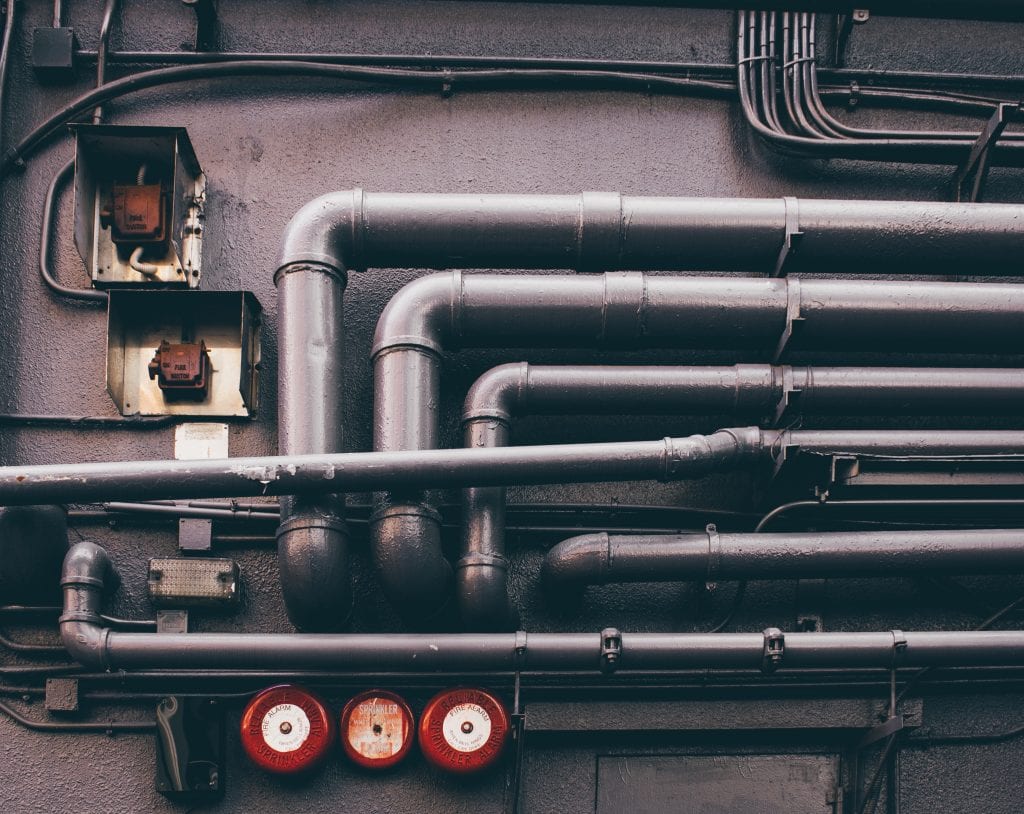
Heat networks are systems in which heating, cooling or hot water is generated at a central source and supplied by the operator to multiple third party consumers. Heat networks serve either multiple buildings (district heating) or multiple occupants in a single building (communal heating). A lot of social landlords have these systems and charge residents for the heating, making the organisation a ‘heat supplier’ with the day-to-day responsibility of operating the system.
Pros and Cons
Heat networks are thought to be an efficient way of heating homes as one energy centre can be fuelled by waste heat from power stations, energy from waste facilities and other industrial processes. Additionally, the one central boiler can be a very efficient make and model. On the other hand, the vast majority of heat networks we come across through SHIFT are gas heated and not fuelled by waste heat. Other downfalls of these systems include:
- They can be poorly installed or maintained resulting in inefficiencies.
- Controls can also be inadequate leading to high bills.
- Inefficiencies can lie within the system and heat loss can occur between the operational centre and the final customers particularly where pipes are not well insulated; these inefficiencies lead to increased bills for energy the resident has not used.
- The resident is unable to control their supply and bills in unmetered properties.
- Fuel costs also include handling and managing costs for residents.
Our SHIFT data indicates that current communal heating system use over 3x the expected heat requirements of an energy efficient home. This means that there is wastage in either the heating system itself or poor fabric in the home. This large discrepancy is largely due to the lack of regulations on metering communal heating systems, meaning that when the system is supplying heat for communal areas as well as homes these sites are not sub metered and usage can’t be split out. 2020 amendments to the Heat Network Regulations now means all building owners should be able to state their heat networks and the number of customers supplied as well as the duty to install building and customer level meters at qualifying properties[1]. Metering aids transparency and fairness in billing for customers.
Low carbon alternatives
The gas communal/district heating systems managed by building owners currently will need to be replaced to achieve net zero carbon by 2050. With individual gas boilers prohibited in new build homes from 2025 and a shift towards electric heating to decarbonise heating systems, where does this leave communal/district heating systems?
The Committee on Climate Change (CCC) envision a future where we are reliant on a combination of low carbon heat networks, heat pumps and low-carbon hydrogen supplying energy for our heating[2]. The CCC suggest that neither heat pumps nor hydrogen should be ruled out and that low-carbon heat networks are a low regret opportunity that cannot wait until the 2030s. According to the CCC, to be economically viable, district heating schemes require a large density of heat demand, making them suited to urban areas.
Low carbon alternatives that have been little explored up until now include electric heat pumps, solar heating with thermal energy storage and the potential for hydrogen heat . In a press release issued at the end of May, the Department for Business, Energy & Industrial Strategy (BEIS) announced £44 million of funding towards low carbon heating and technology as part of the impending Heat and Buildings Strategy[3]. This included funding for 2 heat network projects in Manchester and Cambridgeshire. The project in Manchester’s city centre aims to distribute low carbon electricity, heating and cooling to a range of buildings (including hospitals, social/private housing and student accommodation) powered by solar panels and air source heat pumps. A similar project in Cambridge will allow 300 properties to transition from oil to low carbon heating using a network of hybrid ground and air source heat pumps. The success and pitfalls of these projects will pave the way for future low carbon heat network systems. Another scheme in south-east London will supply energy drawn from the processing of waste to 21,000 homes. Whilst this is lower carbon, it will still emit considerable amounts of greenhouse gases so it’s unclear what place this has in a net-zero carbon economy in the long-run.
For more information on how to decarbonise your buildings, get in touch here.
[1] UK Government Heat networks (metering and billing) Regulations
[2] Next Steps for UK Heat Policy – Climate Change Committee
[3] £44 million cash boost to cut emissions from buildings and help households save on energy bills – GOV.UK (www.gov.uk)
